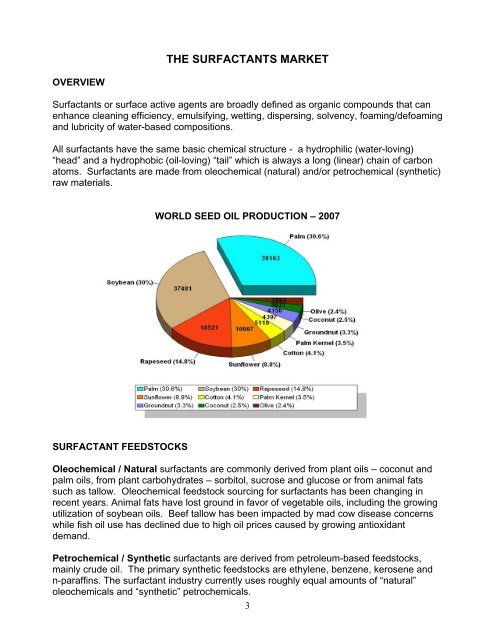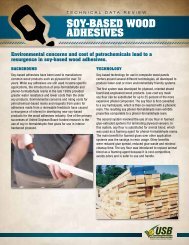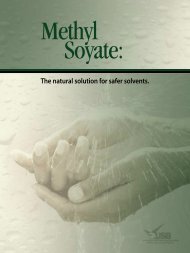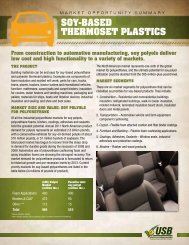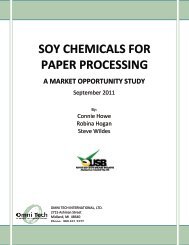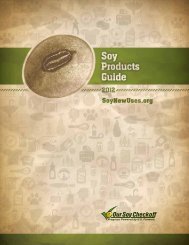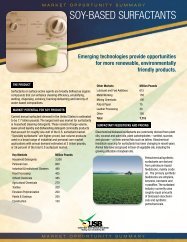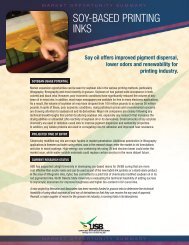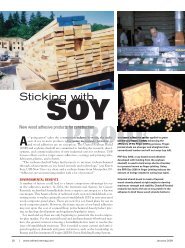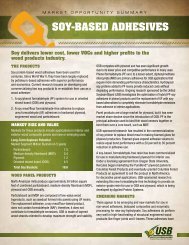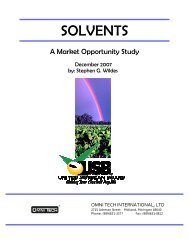Surfactants Market Opportunity Study - January 2009 - Soy New Uses
Surfactants Market Opportunity Study - January 2009 - Soy New Uses
Surfactants Market Opportunity Study - January 2009 - Soy New Uses
You also want an ePaper? Increase the reach of your titles
YUMPU automatically turns print PDFs into web optimized ePapers that Google loves.
THE SURFACTANTS MARKET<br />
OVERVIEW<br />
<strong>Surfactants</strong> or surface active agents are broadly defined as organic compounds that can<br />
enhance cleaning efficiency, emulsifying, wetting, dispersing, solvency, foaming/defoaming<br />
and lubricity of water-based compositions.<br />
All surfactants have the same basic chemical structure - a hydrophilic (water-loving)<br />
“head” and a hydrophobic (oil-loving) “tail” which is always a long (linear) chain of carbon<br />
atoms. <strong>Surfactants</strong> are made from oleochemical (natural) and/or petrochemical (synthetic)<br />
raw materials.<br />
WORLD SEED OIL PRODUCTION – 2007<br />
SURFACTANT FEEDSTOCKS<br />
Oleochemical / Natural surfactants are commonly derived from plant oils – coconut and<br />
palm oils, from plant carbohydrates – sorbitol, sucrose and glucose or from animal fats<br />
such as tallow. Oleochemical feedstock sourcing for surfactants has been changing in<br />
recent years. Animal fats have lost ground in favor of vegetable oils, including the growing<br />
utilization of soybean oils. Beef tallow has been impacted by mad cow disease concerns<br />
while fish oil use has declined due to high oil prices caused by growing antioxidant<br />
demand.<br />
Petrochemical / Synthetic surfactants are derived from petroleum-based feedstocks,<br />
mainly crude oil. The primary synthetic feedstocks are ethylene, benzene, kerosene and<br />
n-paraffins. The surfactant industry currently uses roughly equal amounts of “natural”<br />
oleochemicals and “synthetic” petrochemicals.<br />
3


